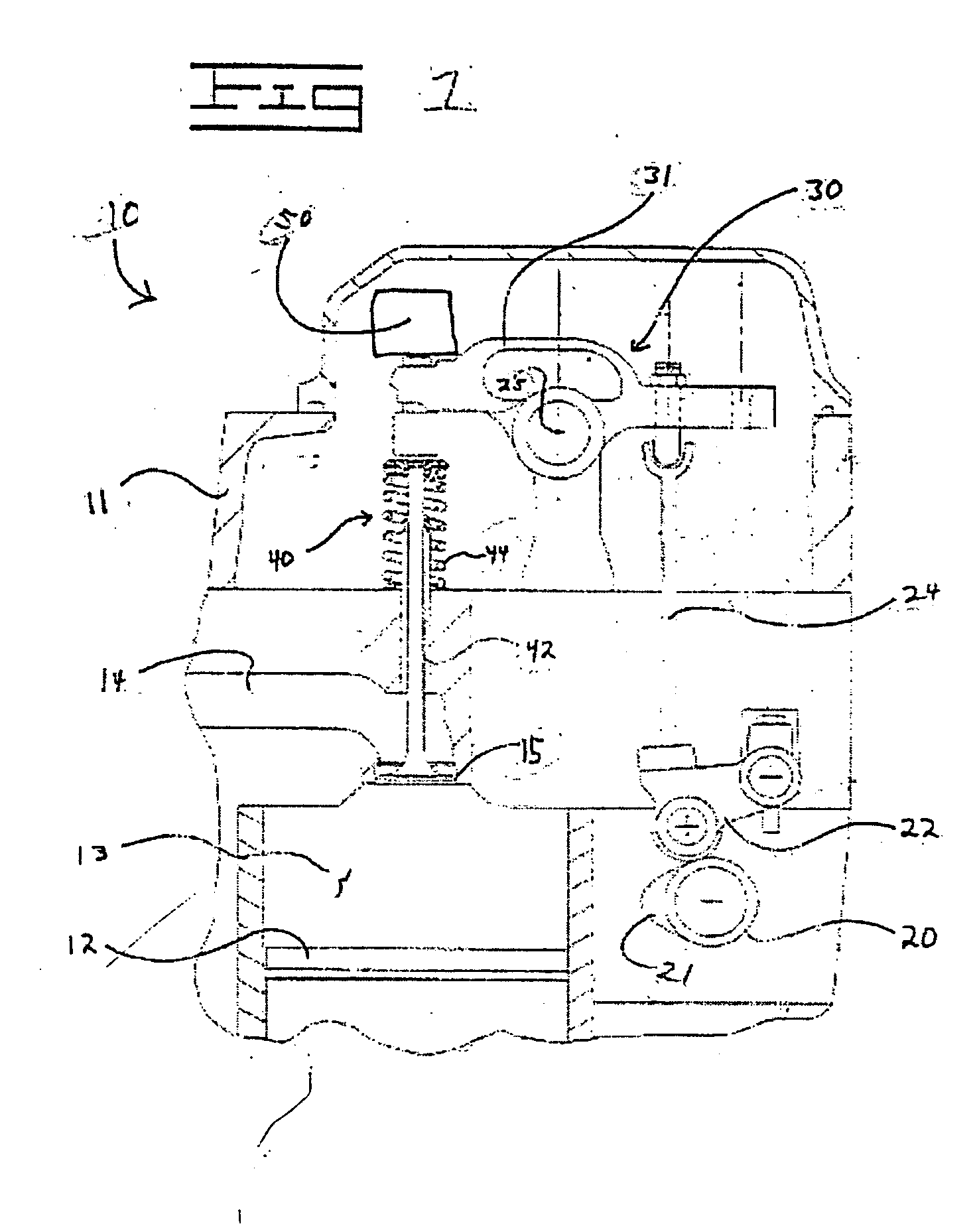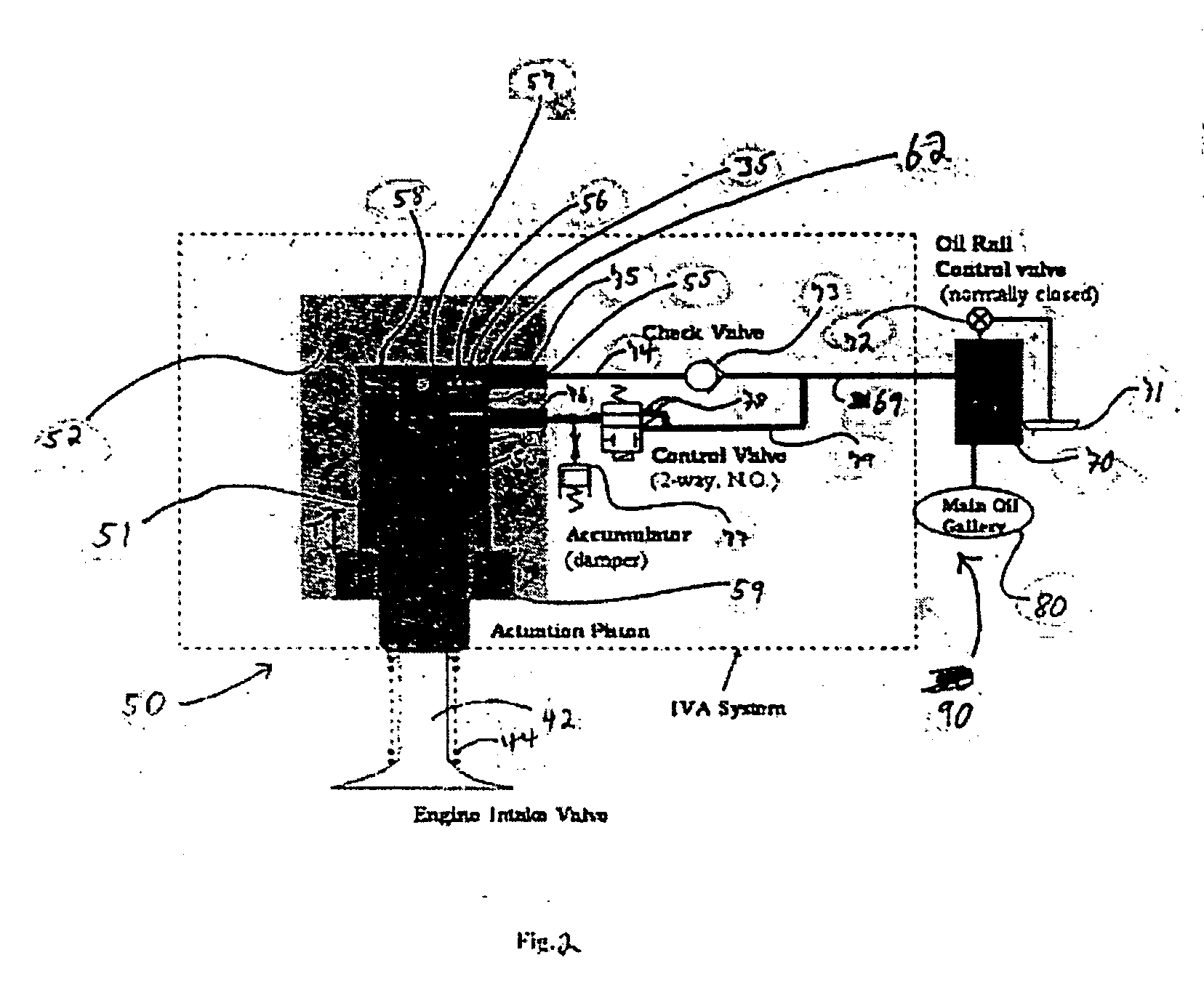Internal combustion engine valve seating velocity control
a technology of internal combustion engine and seat, which is applied in the direction of non-mechanical valves, valve arrangements, machines/engines, etc., can solve the problems of excessive valve seating impact velocity, valve itself, and compromising the sealing ability of the valve, and achieve the effect of reducing the impact velocity of the valve sea
- Summary
- Abstract
- Description
- Claims
- Application Information
AI Technical Summary
Benefits of technology
Problems solved by technology
Method used
Image
Examples
Embodiment Construction
[0017] Referring to FIG. 1, there is shown an engine 10 in accordance with a preferred embodiment of the present disclosure. Engine 10 includes an engine housing 11 defining a cylinder 13 within which a piston 12 is reciprocable. Engine 10 may be any internal combustion engine; it is contemplated that in a preferred embodiment engine 10 will be a compression ignition engine such as a conventional diesel engine, and may be operable as a homogeneous charge compression ignition diesel engine. Engine 10 further provides a gas exchange valve assembly 40 having a gas exchange valve member 42 that reciprocates between an open position and a closed position, as depicted in FIG. 1, the valve member being biased toward its closed position with a return spring 44. A gas exchange passage 14 is further defined by engine housing 11, and may be either of an exhaust passage for expelling combustion products, or an intake passage supplying air for combustion with fuel.
[0018] In a preferred embodime...
PUM
 Login to View More
Login to View More Abstract
Description
Claims
Application Information
 Login to View More
Login to View More - R&D
- Intellectual Property
- Life Sciences
- Materials
- Tech Scout
- Unparalleled Data Quality
- Higher Quality Content
- 60% Fewer Hallucinations
Browse by: Latest US Patents, China's latest patents, Technical Efficacy Thesaurus, Application Domain, Technology Topic, Popular Technical Reports.
© 2025 PatSnap. All rights reserved.Legal|Privacy policy|Modern Slavery Act Transparency Statement|Sitemap|About US| Contact US: help@patsnap.com



